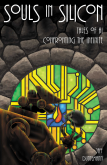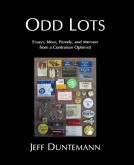
A day late, perhaps, but no less sincerely, let me wish everyone who reads this a good and blessed Christmas, from here on the snowy side of Cheyenne Mountain. We had a day so cold, clear, and crisp that I was walking around the house carefully, lest it shatter. This was our year to stay in Colorado for the holiday season. (Next year, as is our custom, we’ll be in Chicago.) Two thirds of the country had a white Christmas, which is great unless you happen to be traveling while the whitening is going on. Ducked that bullet, whew.
We’ve had our tree for a week or so now, and it may rank as the best Christmas tree we’ve ever scored. Tall by our historical standards at about 7′, it’s also a balsam, a breed of tree I don’t think we’ve ever had in 33 years of marriage. I’ve been a little leery of them since I was five or six and broke out in a rash on my hands when my mother allowed me to place some ornaments on the tree. Somewhere we have a photo of me hanging ornaments with my winter mittens on, and although history is silent on the point, I have to wonder if some of my poor mother’s ornaments didn’t survive the adventure.
No rash this time–I guess one can grow out of such things–and the tree is not so full as to make finding places for ornaments a challenge, nor so sparse as to look like Charley Brown’s poor twig from the Peanuts TV special. It’s taking water and is not yet losing needles. Dash pulled a stuffed Saguaro cactus ornament off the tree and tried to remove its stuffing, but we caught him before he got too far. Jack has been spotted licking the colored light bulbs when they’re off, but apart from that there’s been no tree mischief.
 There was some stress on Tuesday night when Carol’s mom fell at her home outside Chicago and was taken to the hospital. She didn’t break anything, fortunately, but had to spend Christmas in a hospital bed. To cheer her up I put an SX270 system on the coffee table by the Christmas tree and set up a Skype video call with my nephew Brian. The hospital has Wi-Fi in the rooms, and Brian set his new laptop up on Delores’s bed tray. So by virtue of my Phillips ToUCam and Brian’s built-in Webcam, she could see us, the dogs, and the Christmas tree. Delores was delighted, and it’s a technique to keep in mind if you find yourself in such a situation. Skype is very good with detecting and autoconfiguring Webcams, and there was no fussing involved. I plugged in the ToUCam, made the call, and video happened. It’s not exactly a flying car, but it’s definitely one of those odd Sixties dreams fulfilled, mostly when nobody was looking.
There was some stress on Tuesday night when Carol’s mom fell at her home outside Chicago and was taken to the hospital. She didn’t break anything, fortunately, but had to spend Christmas in a hospital bed. To cheer her up I put an SX270 system on the coffee table by the Christmas tree and set up a Skype video call with my nephew Brian. The hospital has Wi-Fi in the rooms, and Brian set his new laptop up on Delores’s bed tray. So by virtue of my Phillips ToUCam and Brian’s built-in Webcam, she could see us, the dogs, and the Christmas tree. Delores was delighted, and it’s a technique to keep in mind if you find yourself in such a situation. Skype is very good with detecting and autoconfiguring Webcams, and there was no fussing involved. I plugged in the ToUCam, made the call, and video happened. It’s not exactly a flying car, but it’s definitely one of those odd Sixties dreams fulfilled, mostly when nobody was looking.
We also called my sister and Bill on Bill’s laptop, and sang the ABCs song with Katie. Katie looked puzzled, but Julie just beamed. In another couple of years this sort of thing will be second nature to them.

This was a very good year for Lionel trains: I finally bought a modern steam locomotive to run around the tree, and boggled a little to find myself searching underneath the brand-new 4-6-0 MTH Camelback loco (above) for its volume control. It has a built-in electronic sound effects system that plays real steam locomotive sounds, a bell, water-pump thumps, and other racket at deafening volume. Jack backed around the tree as I slowly ran it along the  tracks, yapping furiously at it until he got bored. Pete Albrecht unexpectedly sent me a rare artifact indeed: An original Lionel 275W ZW dual-control transformer (right) that was probably made in the midlate 1950s. It works great, and can control two independent track sections and two independent sets of accessories.
tracks, yapping furiously at it until he got bored. Pete Albrecht unexpectedly sent me a rare artifact indeed: An original Lionel 275W ZW dual-control transformer (right) that was probably made in the midlate 1950s. It works great, and can control two independent track sections and two independent sets of accessories.
Christmas for us really isn’t about gifts (and I confess to being a little tired of Santa Claus supersaturation this year) but once again, my spouse knows me well, and bought me an electric blue summer robe to replace my old terrycloth robe that’s been falling to pieces for the last ten years. She also presented me with my recent books wantlist: The Long Summer and Fish On Friday, both histories by Brian Fagan, and two popular treatments of decision psychology: Nudge by Richard Thaler and Cass Sunstein, and Predictably Irrational by Dan Ariely. Fagan is the author of The Little Ice Age, and The Long Summer is his followup about the warm period that followed the end of the last ice age.
I bought Carol her fondest wish: A universal TV system remote that allows you to program whatever sequence of steps is required to turn everything on and then pop the drawer for a DVD, all with a single button press. (She’s justifiably weary of having a fruit-bowl full of diverse, incompatible, button-riddled remotes on the coffee table.) It’s a Logitech Harmony One, and I guess now I have to figure out how to program it. Hey, I know assembly; how hard can it be?
Our friends Jim and Marcia came by for Christmas dinner at 2. We had a spiral ham, Yukon Gold mashed potatoes, spinach salad, home-made apple-pecan bread from Jimi Henton, steamed asparagus, and Carol’s signature spiced squash soup with cranraisins floating in it. I opened a Campus Oaks Old Vine Zinfandel 2007, and we had hot spiced cider as well as some Colorado honey mead that Jim brought. We stayed at the table for almost six hours, solving the world’s problems and designing the odd universe, and overall considered it an excellent Christmas Day indeed.
Nor is it over. Carol and I celebrate Christmas for at least a week, so for us it’s really only beginning. If this is your season (whatever you may call it) to celebrate all that is good in the world, hold that thought–there’s no reason at all to stay there for one day only and call it done!


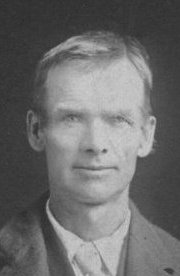 Not much. But it’s an interesting sort of detective work, this family resemblances stuff. I do know that my great-great grandfather Heinrich Duntemann 1843-1892 had four brothers, all of whom long survived him, who died of an infection from a farm injury at 48. I have photos of two of his brothers, William Duntemann 1849-1921 (left) and Hermann Duntemann 1859-1933. (right). William’s photo was taken when he was in his sixties, as best I know. Hermann’s was taken when he was 26. If I had to guess, I’d say that the leftmost man in the group photo was William, and the rightmost was Hermann. The remaining man may have been Louis Duntemann 1851-1928. I can’t tell, as I’ve never seen a photo and know very little about him.
Not much. But it’s an interesting sort of detective work, this family resemblances stuff. I do know that my great-great grandfather Heinrich Duntemann 1843-1892 had four brothers, all of whom long survived him, who died of an infection from a farm injury at 48. I have photos of two of his brothers, William Duntemann 1849-1921 (left) and Hermann Duntemann 1859-1933. (right). William’s photo was taken when he was in his sixties, as best I know. Hermann’s was taken when he was 26. If I had to guess, I’d say that the leftmost man in the group photo was William, and the rightmost was Hermann. The remaining man may have been Louis Duntemann 1851-1928. I can’t tell, as I’ve never seen a photo and know very little about him.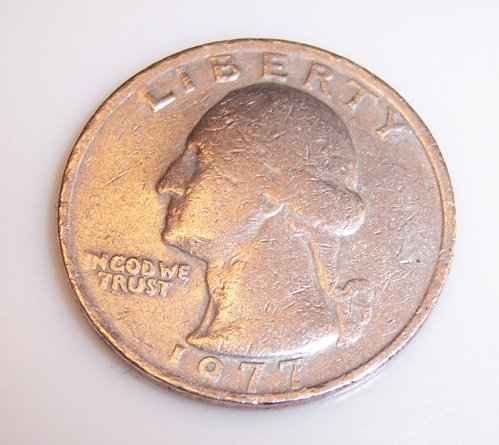
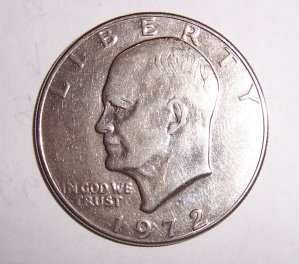 Life is full of little weirdnesses, and here’s yet another: Shortly before we left for Hawaii last month, my lucky dollar turned up missing. That’s the very one at left, though it’s shinier and more worn now than it was when
Life is full of little weirdnesses, and here’s yet another: Shortly before we left for Hawaii last month, my lucky dollar turned up missing. That’s the very one at left, though it’s shinier and more worn now than it was when 
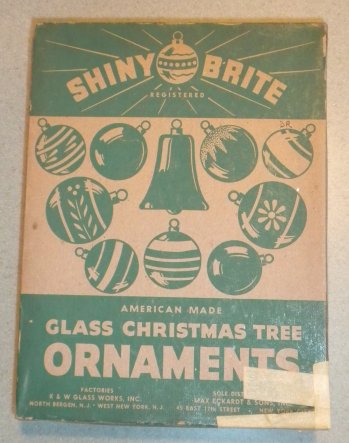 We broke only one glass ornament this year, and it wasn’t one of the old ones. It was perhaps ten years old, the sort of worked-glass item you see artists making in real time with a blowtorch at home and garden shows, out of thin glass rod. When Carol touched it to take it down from the tree, it literally flew apart in her hands. (There were internal stresses involved, as we vacuumed up fragments six feet away.)
We broke only one glass ornament this year, and it wasn’t one of the old ones. It was perhaps ten years old, the sort of worked-glass item you see artists making in real time with a blowtorch at home and garden shows, out of thin glass rod. When Carol touched it to take it down from the tree, it literally flew apart in her hands. (There were internal stresses involved, as we vacuumed up fragments six feet away.) Wow.
Wow.
 There was some stress on Tuesday night when Carol’s mom fell at her home outside Chicago and was taken to the hospital. She didn’t break anything, fortunately, but had to spend Christmas in a hospital bed. To cheer her up I put an SX270 system on the coffee table by the Christmas tree and set up a Skype video call with my nephew Brian. The hospital has Wi-Fi in the rooms, and Brian set his new laptop up on Delores’s bed tray. So by virtue of my Phillips ToUCam and Brian’s built-in Webcam, she could see us, the dogs, and the Christmas tree. Delores was delighted, and it’s a technique to keep in mind if you find yourself in such a situation. Skype is very good with detecting and autoconfiguring Webcams, and there was no fussing involved. I plugged in the ToUCam, made the call, and video happened. It’s not exactly a flying car, but it’s definitely one of those odd Sixties dreams fulfilled, mostly when nobody was looking.
There was some stress on Tuesday night when Carol’s mom fell at her home outside Chicago and was taken to the hospital. She didn’t break anything, fortunately, but had to spend Christmas in a hospital bed. To cheer her up I put an SX270 system on the coffee table by the Christmas tree and set up a Skype video call with my nephew Brian. The hospital has Wi-Fi in the rooms, and Brian set his new laptop up on Delores’s bed tray. So by virtue of my Phillips ToUCam and Brian’s built-in Webcam, she could see us, the dogs, and the Christmas tree. Delores was delighted, and it’s a technique to keep in mind if you find yourself in such a situation. Skype is very good with detecting and autoconfiguring Webcams, and there was no fussing involved. I plugged in the ToUCam, made the call, and video happened. It’s not exactly a flying car, but it’s definitely one of those odd Sixties dreams fulfilled, mostly when nobody was looking.
 tracks, yapping furiously at it until he got bored. Pete Albrecht unexpectedly sent me a rare artifact indeed: An original Lionel 275W ZW dual-control transformer (right) that was probably made in the midlate 1950s. It works great, and can control two independent track sections and two independent sets of accessories.
tracks, yapping furiously at it until he got bored. Pete Albrecht unexpectedly sent me a rare artifact indeed: An original Lionel 275W ZW dual-control transformer (right) that was probably made in the midlate 1950s. It works great, and can control two independent track sections and two independent sets of accessories.






